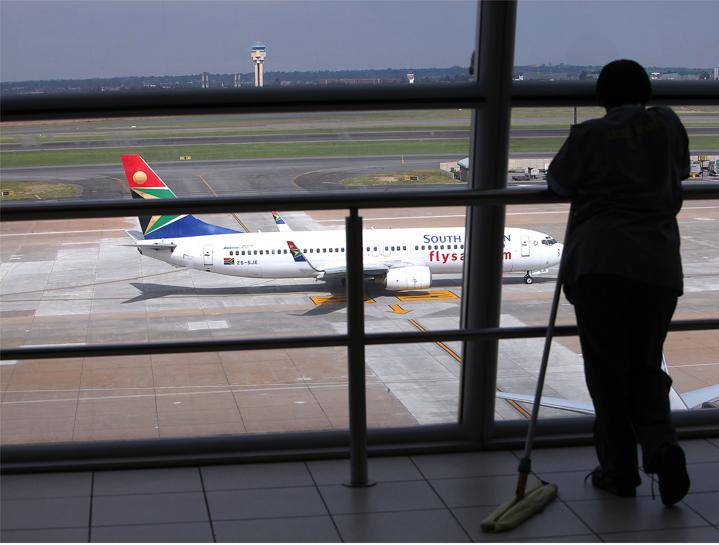


Local airlines say the current lockdown restricts air travel. Although restrictions were eased last month, fewer people are flying. Picture: Alon Skuy / Gallo Images
- The main
question that remains to be answered is where the funding to implement
SAA’s rescue plan will come from.
Tito Mboweni does not exclude the possibility of approaching
“institutions” to invest pension funds for this purpose.
question whether the Development Bank of SA, PIC or IDC might end up
footing the funding bill.
A crucial
deadline for all the conditions stipulated in the business rescue plan for
South African Airways (SAA) to have been met has come and gone, creating an
open question about the way forward for the state-owned airline.
The most
important question to be answered is who will fund the rescue plan?
A letter
signed by Public Enterprises Minister Pravin Gordhan and Finance Minister Tito
Mboweni only indicated government support to “mobilise” funding to
implement the plan.
About
R10.3 billion in additional funding would be needed, of which the most crucial
to start off with would be about R800 million for post-commencement creditors,
about R2.2 billion for voluntary severance and retrenchment packages as well as
about R2 billion for working capital.
If the
conditions are not all met by midnight on 22 July, the practitioners indicated they
would have to call a creditors’ meeting on Friday to ascertain the way forward.
If the practitioners find the plan is still “unimplementable” by
then, they may have no other option but to liquidate the 86-year-old airline.
SAA went
into business rescue in December 2019 following years of losses and repeated
state bailouts to the tune of about R30 billion over the past 10 years.
Although National
Treasury indicated on Wednesday afternoon it would not comment at this stage on
where the funding would come from, Mboweni indicated in a recent sworn
statement he had not authorised the use of funds from the National Revenue Fund
for emergency funding to implement the business rescue plan.
He did
not however, exclude the possibility of approaching “institutions” to
invest pension funds for this purpose.
Mboweni
said there were a number of options which the government might explore to
“mobilise” funding and that included approaching private equity
partners or strategic partners to acquire shareholding in the new airline or
approaching local and international investment institutions.
Pot of
gold?
Airline
experts polled by Fin24 were mostly of the opinion, given the devastating
impact of the coronavirus pandemic on the airline industry, it was highly
unlikely any private investor would be interested in putting money into a
“new SAA”. They said nothing much would change in the unsustainable
structure of the company.
This begs
the question of whether the money could come from state institutions such as
the Development Bank of Southern Africa, which already provided R3.5 billion in
emergency funding for SAA after it went into business rescue.
The bank,
which invests in developmental infrastructure, would not comment on whether it
had been approached to fund the rescue project.
The
Industrial Development Corporation (IDC), the state-owned national development
finance institution, said its decisions were based on merit. It takes “…
into consideration the viability of all business proposals submitted to the
corporation. Such a request would be subject to a similar IDC process”,
the corporation said in an emailed response to Fin24.
The
state-owned Public Investment Corporation (PIC), with more than R2 trillion
worth of assets under management, has not been approached regarding funding the
“new” SAA.
“Should
the PIC be approached with an investment proposal, such a proposal will be
evaluated in terms of the clients’ investment mandates and subjected to internal
investment processes,” said Deon Botha, its head of corporate affairs.
Legal
point of view
The managing
director and business rescue practitioner at Turnaround Rescue Solutions, Gideon
Slabbert, said if one applied the legal business rescue criteria to SAA, one
should answer the fundamental questions of reasonable prospect and a
better-return-than-in-liquidation.If one applied the business rescue criteria in terms of the Companies Act to
SAA, it was apparent there was no reasonable prospect in rescuing the business,
he added.
“If
the state applies a fair process in accordance with the law then this business
should be liquidated. The financial impact of the additional financing of the
business rescue plan will far exceed the current amount stated in the rescue
plan and it will burden the country and the tax system and should, therefore,
not be allowed to continue,” he cautioned.

